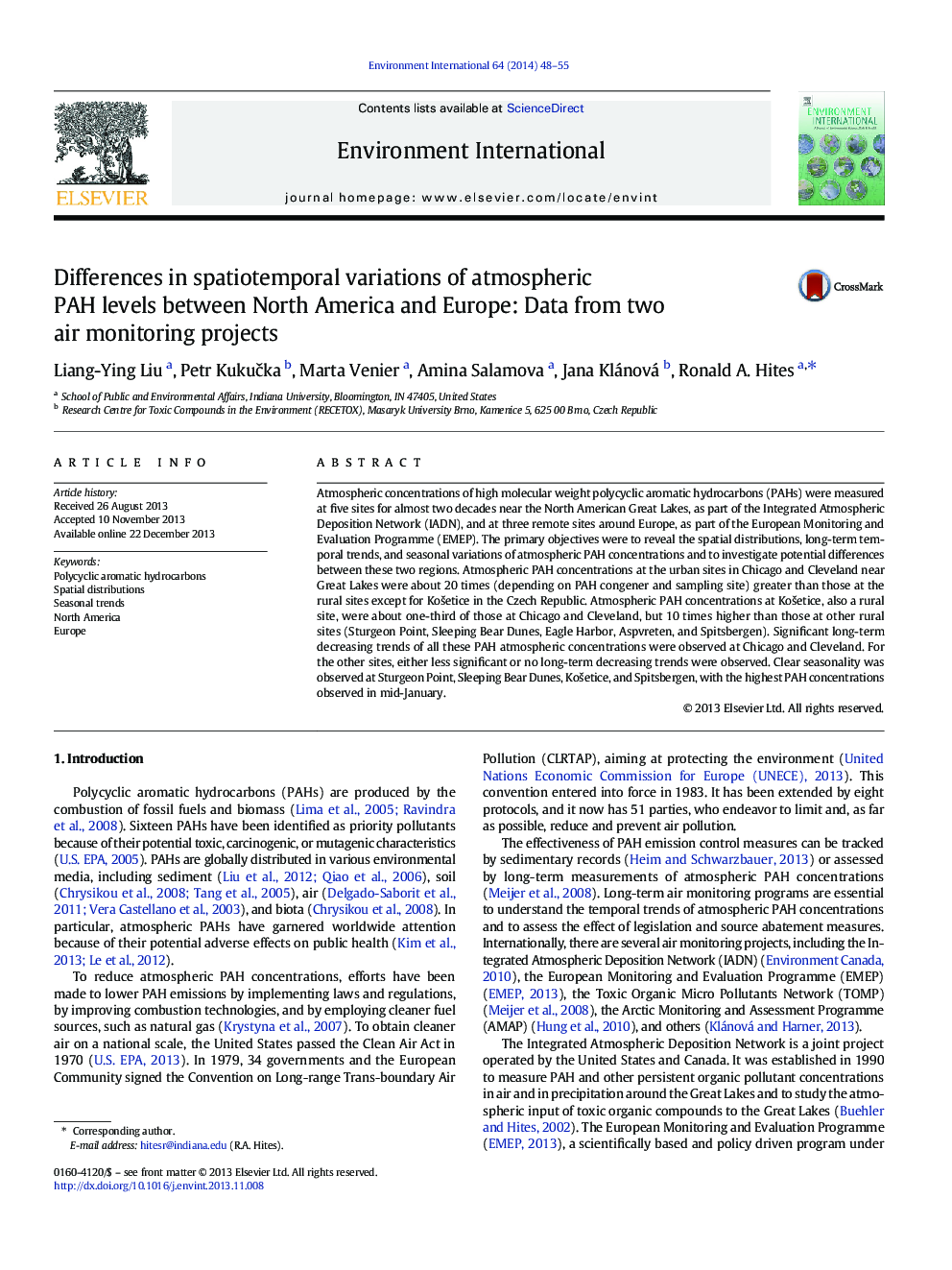| Article ID | Journal | Published Year | Pages | File Type |
|---|---|---|---|---|
| 4422787 | Environment International | 2014 | 8 Pages |
•Atmospheric PAH concentrations obtained by IADN and EMEP are reported.•Long-term decreasing trends and seasonal variations are observed.•Plausible reasons for spatial distributions are investigated.
Atmospheric concentrations of high molecular weight polycyclic aromatic hydrocarbons (PAHs) were measured at five sites for almost two decades near the North American Great Lakes, as part of the Integrated Atmospheric Deposition Network (IADN), and at three remote sites around Europe, as part of the European Monitoring and Evaluation Programme (EMEP). The primary objectives were to reveal the spatial distributions, long-term temporal trends, and seasonal variations of atmospheric PAH concentrations and to investigate potential differences between these two regions. Atmospheric PAH concentrations at the urban sites in Chicago and Cleveland near Great Lakes were about 20 times (depending on PAH congener and sampling site) greater than those at the rural sites except for Košetice in the Czech Republic. Atmospheric PAH concentrations at Košetice, also a rural site, were about one-third of those at Chicago and Cleveland, but 10 times higher than those at other rural sites (Sturgeon Point, Sleeping Bear Dunes, Eagle Harbor, Aspvreten, and Spitsbergen). Significant long-term decreasing trends of all these PAH atmospheric concentrations were observed at Chicago and Cleveland. For the other sites, either less significant or no long-term decreasing trends were observed. Clear seasonality was observed at Sturgeon Point, Sleeping Bear Dunes, Košetice, and Spitsbergen, with the highest PAH concentrations observed in mid-January.
